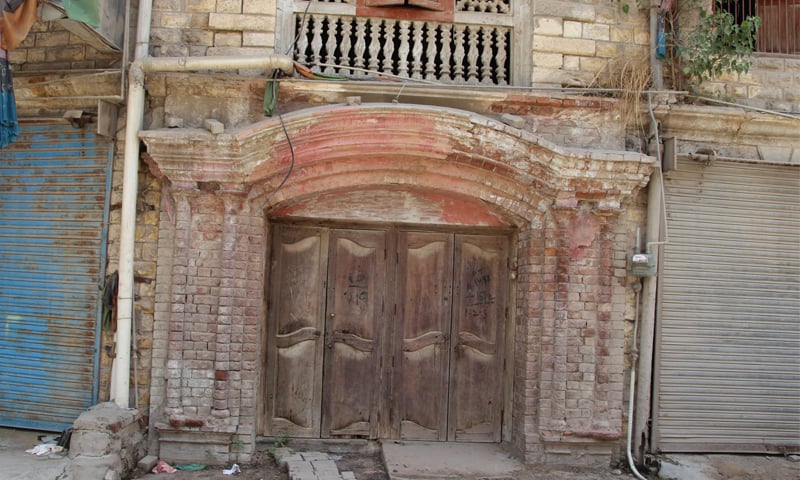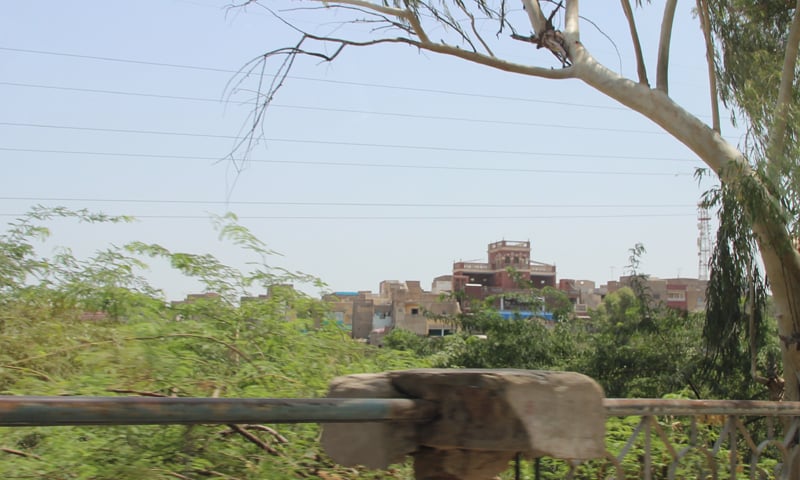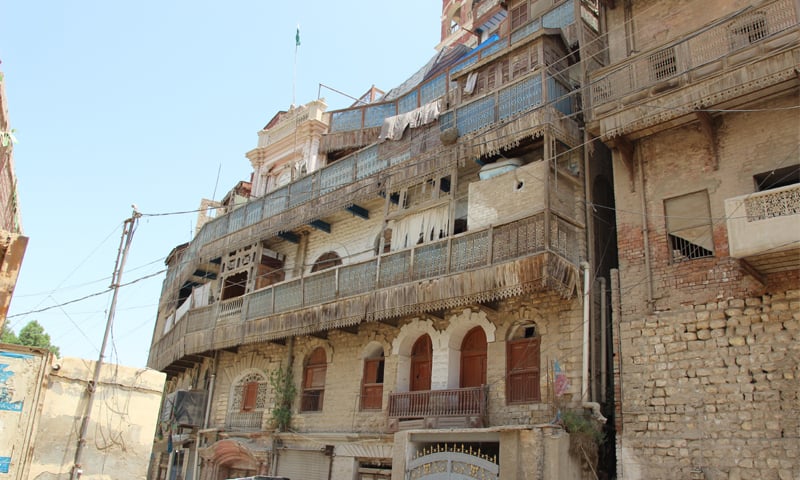Pakistan is brimming with a myriad of architectural styles harking back to its pre-Partition history. From Indo-Islamic and Mughal style, to gothic and neoclassical architecture, the buildings can be classified to evoke the various bygone eras. Many buildings have gained recognition over the years to be given the status of heritage sites, but because of a lack of funds many lie abandoned and crumbling, without maintenance or repair work.
One such building is the Om Kanhaiya Lal Cottage, which sits atop a hill in the heart of Rohri, Sindh. At the intersection of Nako Chowk, close to Navy Park, this house has survived almost a hundred years. Built in 1930, it is also known as “sut maar” — Sindhi for seven-storey building.
The owner of this house was an affluent businessman Om Kanhaiya Lal. Soon after Partition, he fled modern-day Pakistan. It is not known whether he sold the house or just gave it away like so many others who abruptly abandoned their properties to migrate.
A 1930s’ seven-storeyed house in Rohri still retains many of its original splendid architectural features
While on a heritage excursion that I was conducting in Rohri, I had the opportunity to visit the cottage. I had gotten in touch with one of the current residents there, a local schoolteacher named Farkhanda Jawaid. She and her family are not the only residents of the house. During the course of time, this large seven-storey family home was divided into five units, each with separate entrances, and now has five different families as its occupants.

The climb up the steep hill to reach the cottage under a hot afternoon sun, had left me gasping for breath. Upon reaching the property, I was struck by the imposing facade of the house: a combination of yellow stone and red bricks with wooden jharokhas, or overhung balconies supported by wood cornices.
I entered one of the five units from what was originally the main entrance but now used as the back entrance. This was the portion where a family, the Kamrans, lived. They welcomed me warmly, offering me food and chilled water. After the somewhat laborious walk to the house, once inside the rooms, I felt the cooling effect of the thick brick walls of the house. The building also has large interconnected halls, with high ceilings that rest on Belgian iron girders. The height of the rooms makes them airy and lend a feeling of spaciousness; one does not feel the suffocation of the peak hot hours of the day despite the lack of air conditioning.

Conversing with the family, I could tell that they realised the historical value of this house and what it represents in terms of heritage. They told me they were glad to share any details about the property that they were aware of.
Quite a few of the old architectural elements of the house exist in their original forms, such as built-in closets with door shutters, cemented floors with symmetrical floral motifs, wooden handrails on terraces with wrought-iron balusters still sturdy. Intricately carved wooden coves and trellises underneath balcony slabs are also well maintained. I was also shown the secret shafts that still exist, built in case of emergencies. Seeing and touching the original architectural features of the house preserved over a century, one could not help but be engulfed in nostalgia. Of course, many changes had been made during renovation carried out by residents over time, according to their needs.

Mr Kamran’s young daughter, Mariam, took me up a narrow, spiral staircase. We climbed five flights of stairs, with each step at least a foot high to reach the first rooftop, the pièce de résistance. Semi-covered with 12 arched openings, this floor is called the bara dari or 12 doors. The symmetrical open areas of this rooftop were now covered with solar panels which are commonly seen installed in many houses throughout Sindh because of the long hours of regular load-shedding. On the seventh storey of the house was another rooftop, but access to it had been blocked to keep children from having accidents if they go upstairs.
It was windy on the rooftop and the bara dari offered a magnificent view of Lansdowne and Ayub Bridges. Standing there, I could imagine the past inhabitants of the house living here as vividly as I could see the Kamran family who accompanied me. The rooftops must have been the spot for chatting over cups of tea in the evening while enjoying views of the bridges.

It is hard to imagine that this structure was once a single unit catering to only one family. Over the years, with the increase of population and the rise in property rates, our living spaces have shrunk and have to be smartly utilised — a principle very much in use at the present-day Om Kanhaiya Lal Cottage.
The writer is a solo traveller, architect and heritage activist
Published in Dawn, EOS, November 24th, 2019
















































Dear visitor, the comments section is undergoing an overhaul and will return soon.